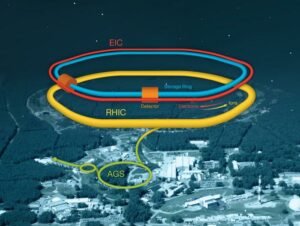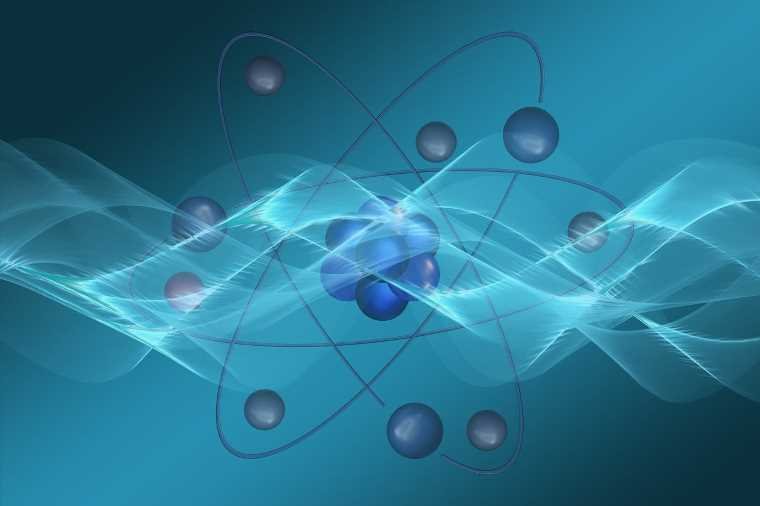The United States Department of Energy (DOE) and the French Alternative Energies and Atomic Energy Commission (CEA) have signed a “Statement of Interest” to collaborate on the construction of the world’s first-ever Electron-Ion Collider (EIC).
Scheduled to be built in the U.S. at DOE’s Brookhaven National Laboratory in partnership with DOE’s Thomas Jefferson National Accelerator Facility (Jefferson Lab), the agencies say that the ultra-powerful collider will allow researchers an unprecedented ability to “explore the building blocks of matter and the strongest force in nature.”
“The EIC is the only collider planned to be constructed anywhere in the world in the next decade—and the first to collide a beam of high-energy polarized electrons with a counter-circulating beam of high-energy polarized protons or heavier ions,” a statement from the Brookhaven National Laboratory explains. “A sophisticated detector will capture snapshots of these collisions to reveal how the particles and forces at the heart of atomic nuclei build up the structure and properties of everything we see in the universe today—from stars to planets to people.”
Collaboration Includes Plans to ‘Unravel the Structure of Atomic Nuclei’
While the DOE and the French CEA have been working closely on the earliest plans for the Electron-Ion collider for some time, the new agreement allows them to begin hands-on efforts leading to the EIC’s ultimate construction.


According to the statement, this includes the development of “application-specific integrated circuits (ASICs)” for use in analyzing the large volumes of “data and signals” that the EIC is expected to produce. The two teams are also already working on a large superconducting solenoid magnet that will form the core of the EIC detector and are planning to work together on specialized spin rotor magnets that are critical for “controlling the polarization” of the colliding particles.
In that same statement, the DOE notes that the construction of the world’s first Electron-Ion collider has been met with enthusiasm from researchers and scientists from numerous countries, including a worldwide community of potential EIC researchers “numbering more than 1,400.”
Clearly enthusiastic about the new agreement, both parties also said they hope to collaborate on nuclear physics and “other projects” expected to occur at the EIC once it is constructed. This includes experimental programs designed to “unravel the structure of atomic nuclei and understand how the mass and spin of its protons and neutrons arise from particles called quarks and gluons, the fundamental building blocks whose interactions will be revealed by the EIC.”
“CEA researchers and technologies have long contributed to progress in nuclear physics research efforts, including international experiments that are ongoing here in the U.S.,” said Jefferson Lab Director Stuart Henderson. “The realization of the EIC’s ambitious scientific goals will not only help advance the field of nuclear physics but also the research technologies that lead to applications that are beneficial to society.”
Tangible Benefits of the Electron-Ion Collider
Finally, the DOE notes that along with the pure science such a powerful tool can accomplish, they believe the EIC can also help advance numerous practical technologies. These include things like revealing new medical isotopes and particle beam approaches for diagnosing and treating cancer, aiding artificial intelligence and other computational tools for simulating climate change, tracking global pandemics, and protecting national security. They also believe the EIC can accelerate advances in making and testing computer chips, studying proteins and therapeutic drugs, designing better batteries, developing radiation-resistant materials for energy applications, and creating hundreds of highly skilled jobs and training for a future tech-savvy workforce.
Experts expect the project to take significant time to complete, with formal planning beginning in 2025 and facility operations to begin “in the early 2030s.” They also expect the bill for this one-of-a-kind Electron-Ion Collider to total somewhere between $1.7 and $2.8 billion by the time it is completed.
Christopher Plain is a Science Fiction and Fantasy novelist and Head Science Writer at The Debrief. Follow and connect with him on X, learn about his books at plainfiction.com, or email him directly at christopher@thedebrief.org.

